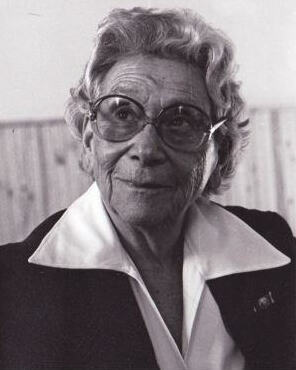Emmi Pikler: Pioneer of child development and the philosophy behind the Pikler Pedagogy and the namesake of the Pikler climbing triangle.
If you have already dealt with childhood education before, the name Emmi Pikler may have met you. With her work and her philosophy, this remarkable woman shaped the modern view of child development. Your approaches are not only scientifically well -founded, but also incredibly practical, which is why they still inspire many parents, educators and educators. In this article I would like to bring you Emmi Pikler, her apprenticeship and the connection with the popular Pikler climbing triangles.
Who was Emmi Pikler?
Emmi Pikler was born in Vienna in 1902 and was a doctor and educator. After studying medicine, she specialized in pediatric medicine. Their special interest was the natural development of infants and small children. Pikler observed how children develop when they grow up in an environment that offers them autonomy and space for free movement. These observations laid the foundation for their later work.
In the 1940s, Pikler took over the management of an orphanage in Budapest-the Lóczy Institute. There she put her knowledge into practice and developed a pedagogical method that is still considered revolutionary.
Pikler Pedagogy after Emmi Pikler
At the center of Pikler's philosophy is the understanding that children are competent beings from birth. They do not have to be “taught”, but are naturally curious and motivated to explore their environment and to develop themselves further. Pikler's approach is based on three central pillars:
1. Free movement
Pikler emphasized that children should have the opportunity to move freely from the start. You do not need any special exercises or aids to learn how to crawl, sit or stand. Instead, you should reach these milestones at your own pace and in your own way. It is important that adults give the children space and do not intervene in their natural development process.
2. Respectful care
The care of babies and toddlers was much more than a routine for Pikler. At these moments, she saw an opportunity to build a deep bond and to bring respect to the child. Every move - whether to wrap, feed or bathe - should be carefully and carefully. By actively incorporating the child into care, you signal: "I take you seriously and respect you."
3. A prepared environment
A suitable environment plays a central role in Pikler's teaching. This should be safe, manageable and adapted to the child's needs. It is important that it offers opportunities for independent exploring without overwhelming the child. This includes age -appropriate play materials and furniture that supports the child in his movement development.
Why are Pikler climbing triangles named after Emmi Pikler?
The Pikler climbing triangle is one of the most famous play and movement devices based on Pikler's principles. It was developed to offer children a safe space for movement and body awareness. But why does this device fit Pikler's teaching so perfectly?
1. Self -determined play
The climbing triangle encourages children to discover their motor skills at their own pace. Whether climbing, climbing over or just observing - the child decides how the triangle uses it. There is no "right" or "wrong" way to play with it.
2. Challenge and security
The Pikler climbing triangle offers an ideal balance between challenge and security. It is stable and designed in such a way that children can use it without danger. At the same time, it challenges them to test their limits and further develop their motor skills.
3. Longevity and versatility
Another advantage of the Pikler climbing triangle is its versatility. With additional elements such as slides or bridges, it can be used in different ways, which means that it remains interesting for many years. It is also made of sustainable materials and therefore particularly durable.
Do you want to learn more about the different models or discover a Pikler climbing triangle for your home? Then take a look at our climbing triangle .
The importance of Emmi Pikler's approach today
Emmi Pikler's knowledge is more relevant than ever. In a world in which children are often flooded with stimuli and the pressure on early support increases, Pikler's teaching recalls how important it is to give children space for free development. It shows that it is not about "shaping" children, but to trust them and accompany them on their individual path.
In Montessori pedagogy, which also relies on self-determination and free development, there are similarities to Pikler's approaches. If you are interested, take a look at our selection of Montessori-inspired indoor play equipment .
Conclusion
Emmi Pikler was a pioneer whose approaches have changed the way we look at children. Their philosophy of free movement, respectful care and prepared environment not only has scientific existing, but is also an invaluable orientation for everyday life with children.
Pikler climbing triangle embody these values in a unique way. They are more than just play equipment - they are an invitation to children, their world self -determined and delight to discover. Try it out and be inspired by the fascination of this pedagogical approach!




